Installing a water softener is one part of the entire water purification that you might have planned for your home. If you are looking to find how long does it take for the water softener to regenerate, it is generally dependent on the usage rather than having to follow any fixed schedule.
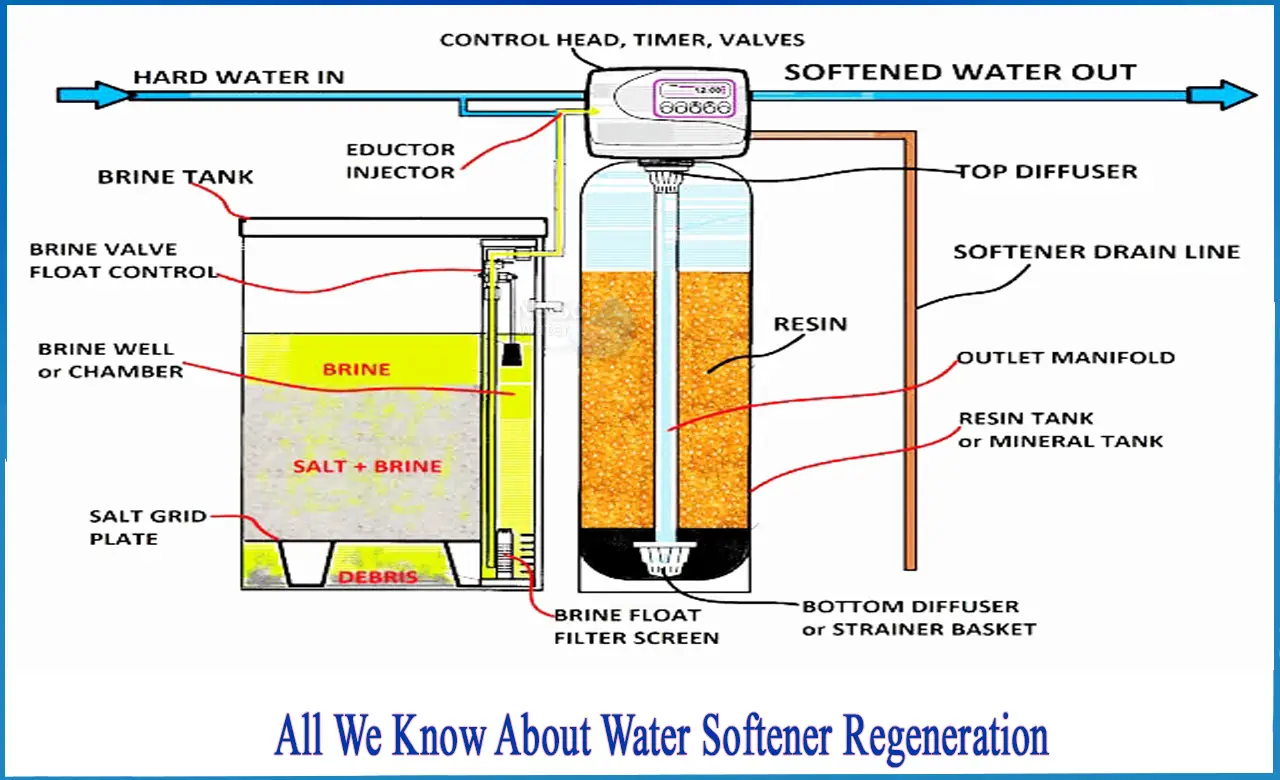
Regeneration of water softener can ideally take around two hours to complete. The factors such as the hardness level of the water and household water usage can affect the time taken for the regeneration.
Factors Affecting Water Softener Regeneration Time
The primary factors affecting the water softener regeneration time can include water softener size, water hardness, and household water usage. These factors would also affect the way regeneration occurs.
The factors and features that would affect the water softener regeneration time can be explained here below:
The age of water softener
The older a water softener gets, the less efficient it becomes in terms of the performance. The less efficient water softener can take a longer time for regeneration.
Clogged components
If you find your water softener begins to have issues related to regeneration, it can largely be due to the clogging of a few components. The brine draw may be clogged, and that can be what stalls the regeneration.
Size of the water softener
The size of the water softener can also be another reason that can cause the water softener to take a lot of time to regenerate. The larger tanks come with larger surfaces and areas, such as resin brands. That would leave it with a massive area that it needs to handle. That would be one of the reasons why it takes a lot of time for regenerating the salt.
Household Water Usage
If your water softener system needs to soften a lot of hard water at a time, it will be forced to regenerate more frequently. This may affect how long it will take to regenerate.
Water hardness
The hardness of the water will determine the time taken to regenerate the water softener. If the water is relatively softer, it will take less time for regeneration.
Quality of resin
The quality of resin beads will also affect the time taken for regeneration. Damage to the resin from the elements such as chlorine can affect the resin and make it lose its quality over time.
How Does Water Softener Regeneration Work? – Stages of Regeneration?
Water softener regeneration is when the water softener flushes the resin bed and replenishes it with the fresh sodium ions. When the water softener regenerates, it flushes away the hardness, causing minerals, and loads up the resin beads with the brine.
During the time of the regeneration process, you will lose access to soft water. When you turn on the faucet, you will find the water reaching you straightaway without being softened, bypassing the softener.
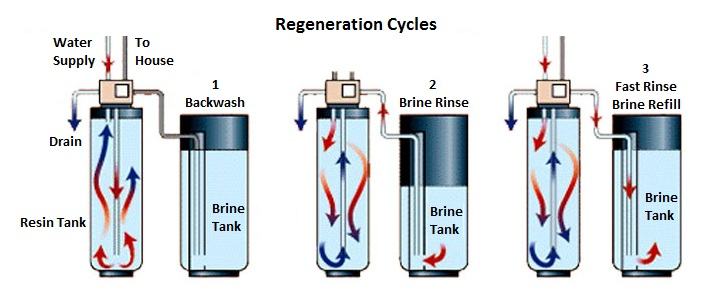
The stages of the regeneration process would include:
Stage 1: Filling
Time Taken: 5 to 20 minutes
In the first stage of the regeneration process, the brine tank is filled with water. The salt inside the brine will dissolve in the water. This will create a brine solution that you will find in use in the next stage.
First-time users may need to be cautious about this step. It is advisable to keep a proper and optimum level of brine in the tank at all times. The water level should be maintained slightly lower than the salt level.
Stage 2: Brining
Time Taken: 3o to 60 minutes
The brine solution then travels to the resin tank. The brine is used for flushing the resin bead in multiple cycles. The hardness minerals are flushed away in this stage. The process will continue until all the resin beads are flushed and renewed with the sodium ions.
This stage will take around 30 to 60 minutes. It is largely dependent on the type of softener that you are using. It can also be dependent on several factors that include age, type, and model of your water softener.
Stage 3: rinsing Brine
Time taken: 5 minutes
The next stage includes the brine rinsing. This stage involves rinsing the brine in a five minute stage. The tank will remain completely cleaner. All the leftover residue and minerals are removed from the brine.
The brine valve closes soon after the predetermined amount of brine has been utilized. The water flows in the same direction that was used for the bringing process. This will help remove any residue from the softener
Stage 4: Backwash
Time taken: 5 to 30 minutes
The stage takes around 10 minutes. This will involve filling and flushing the tank. This will remove all the hardness minerals that may still be trapped inside the resin beads.
The tank is refilled and flushed to remove all the trapped minerals in the water that can cause the water hardness. The flow rate of the stage is controlled to prevent any resin loss.
Stage 5: Fast rinse
Time taken: 10 minutes
This is the final stage and involves flushing the brine through the resin tank. This will ensure that the resin is completely reset. The stage consists in flushing out all the water rapidly from the softener.
This stage will pick any residual brine in the lower section of the tank. The water softener resumes the regular softening process.
Why Does a Water Softener Regenerate?
Water softener regeneration is an essential process and is useful for flushing out the minerals in the water softener. The water softener catches the minerals from the hard water. This will ensure that the water softener will continue to work in softening the new water.
The water softener works on the principle of ion exchange, and the soft water is supplied to the house pipes after the softening process.
Can You Use a Water Softener While It’s Regenerating?
It is ideally not recommended to use water when the water softener is regenerating. Letting the water softener fill the water heater can be a bad idea s the build-up inside the heater can damage it. It can also cause a few adverse effects.
You will let the hard water inside the home and that can have a few serious issues. It is therefore advisable to set the water softener to happen at midnight. You can also set it up at for the early hours of the morning if you are forced to use the water while it is regenerating.
How Often Should My Water Softener Regenerate?
Regenerating the water softener is ideally configured to take place at regular intervals. This will help the resin bed in an active status. It should be set to at least every two to three days. High-end water softeners tend to regenerate every day or even multiple times a day.
How often the water softener regenerates is controlled by the valve of the system. The control valve forms part of the softener as the brain of the water softener. The water softener is better at regenerating once per month or several times per day. The exact time will largely be based on the capacity of your water softener. It would also be based on the volume of the water being handled and the characteristics of the water being handled.
How Many Gallons of Water Does It Take to Regenerate?
During the regeneration process, a water softener will ideally take around 30 to 70 gallons of water. The exact amount is largely dependent on the size of the water being generated. The motor on the softener goes through several steps and will go through multiple starts and stops.
The water used during the process of regeneration will depend on a host of several factors. Some of these factors include the hardness of the water being softened. A few of the softeners would use 20 to 25 gallons of water. Even when it may appear to be a lot of water, it can help save a good deal of water in helping you save enough of your appliances that would otherwise get damaged due to the hard water.
Different Types of Water Softener Regeneration
There are two types of water softener regeneration processes that have been observed to offering a very decent experience – time-initiated regeneration (scheduled regeneration) and demand regeneration.
Scheduled regeneration
This type of regeneration features a control valve that comes with a motorized/digital clock. You will be able to schedule the regeneration of the water softener. Some of the softeners regenerate every two to three days, and most of them regenerate once in a week.
Setting the proper schedule can be difficult, and it can cause the generation of more waste water. The water softener should generally be regenerating when no one is using it. It would be advisable to schedule regeneration between 2 am to 4 am.
On-demand regeneration
On-demand regeneration is the best option to help you in taking care of the proper elimination of the hard water. This method will be helpful in keeping track of how much water is being used before the regeneration process. The water softener will regenerate only when needed.
There is nothing like regenerating your water softener too early or too late. The regeneration begins only when the complete capacity for the softener has been over. It will help you avoid too much or too low regeneration.
How Do I Know If My Softener Is Regenerating?
There are several ways that you would know if your water softener is regenerating. One of the best methods is to check the water itself. You can either conduct a water softener test yourself or consult an expert for the purpose. Another test can be to look for the soap test to find if it lathers properly.
It is advisable to check out the water softener from time to time. It can be helpful in finding details about deviation, if any, in the standard functioning of the softener. You may also have a look at the water quality reports in your area.
What Happens If Your Water Softener Doesn’t Regenerate?
The regeneration process will help you in flushing the minerals from your water softener. With no regeneration process, the beads are likely to be inundated heavily with the minerals to function properly.
The frequent use of the water softener will require an efficient charging or regeneration. But if you find water softener does not regenerate, it can be due to malfunction. It would be necessary to initiate a manual regeneration. You will also need to check the hardness levels of the water to ascertain whether there are any issues with the regeneration process. If you have a scheduled regeneration process and do not find it happening, replace the timer.
Yet another reason for a failure in water softener failing to regenerating can be because of a clogged brine line. It can also be due to the valve, which may prevent the brine from entering the tank.
Some of the prime reasons why your water softener doesn’t regenerate can include:
Your water usage may have changed.
In case your water regeneration was configured based on how much water you use, it may mean you have used less water during the period. It is also possible that you were away from home during that period.
You may have altered the settings
You might have changed the settings for the timer. If that is the case, you may need to reset the schedule once again
The brine tank is empty
The brine tank may be empty, and without the brine tank, the regeneration process will not work. You will need to fill the tank with salt pellets. They are extremely important for washing away the minerals that are found in the hard water.
The water pressure is too low
Check the water pressure in your home. If the pressure does not meet the one that is required for the water softener, you will end up facing issues with the regeneration. It may be necessary to check out the pressure and ensure that it is adequate.
Frequently Asked Questions
Parting Thoughts
Finding how long does it take for the water softener to regenerate can involve a lot of options that you need to explore. There are several factors that assume a lot of essence and importance in deciding the right amount of water softener regeneration. The tips shared above should be helpful in arriving at the best options that you may need to focus on.

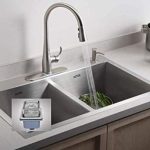

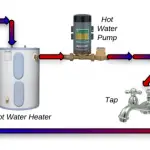
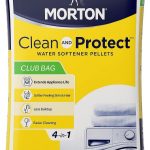
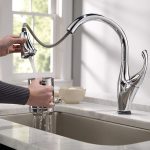






Add Comment